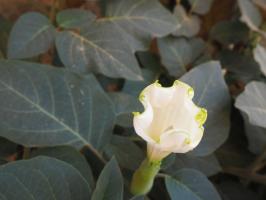Do You Stake Newly Planted Pine Trees?
If you've recently planted pine trees, you may be wondering whether or not staking is necessary. Staking involves securing the young saplings to a supportive pole with a rope or wire attached to the trunk. There is no straightforward answer to whether or not you should stake your newly planted pine trees, as it depends on various factors. In this article, we will discuss the pros and cons of staking and when it may be necessary.
Pros of Staking
One advantage of staking is that it can protect the young trees from strong winds, which can cause them to tilt or uproot. Staking also supports the trees' root systems, helping to stabilize them in the soil. This can be especially important if you live in an area with loose, sandy soil or if the trees are planted on a slope. Staking can also provide a visual cue to other gardeners or landscapers to avoid accidentally stepping on or mowing over the newly planted trees.
Cons of Staking
While staking can provide some protection for young pine trees, it can also hinder their growth and development. If trees are staked for too long, they may become dependent on the support pole and not develop strong roots or trunks. Staking can also damage the bark of the tree if the rope or wire is not properly installed, allowing friction to rub against the bark. In addition, staking can be aesthetically unpleasing, disrupting the natural beauty of the landscape.
When is Staking Necessary?
Deciding whether or not to stake young pine trees depends on various factors, such as the trees' size, location, and the weather conditions in your area. In general, staking is more necessary for taller trees or those planted in locations with high winds or uneven soil. If you live in a region with frequent strong winds or storms, staking may be necessary to provide extra support. However, for smaller trees and in relatively calm locations, staking may not be necessary.
How to Properly Stake Pine Trees
If you do decide to stake your pine trees, it is essential to do it properly to avoid damage and ensure optimal growth. Start by driving a sturdy stake into the ground near the tree trunk. Make sure the stake is at least as tall as the tree and positioned upwind of the direction of the prevailing winds. Attach the rope or wire to the stake and wrap it around the trunk, leaving enough slack for the tree to sway naturally. Use a soft material, such as cloth or rubber, to cushion the trunk from the rope or wire, avoiding damage to the bark. Finally, monitor the trees regularly and remove the stakes and ties once the trees have established themselves in the soil.
In Conclusion
In summary, staking young pine trees can provide some protection and support, but it is not always necessary. Consider the trees' size, location, and weather conditions when making the decision to stake. If you do decide to stake, take care to do it properly to prevent damage to the trees. With proper care and attention, your newly planted pine trees will thrive and add natural beauty to your landscape for years to come.

 how many times do yo...
how many times do yo... how many planted tre...
how many planted tre... how many pine trees ...
how many pine trees ... how many pecan trees...
how many pecan trees... how many plants comp...
how many plants comp... how many plants can ...
how many plants can ... how many plants and ...
how many plants and ... how many pepper plan...
how many pepper plan...































